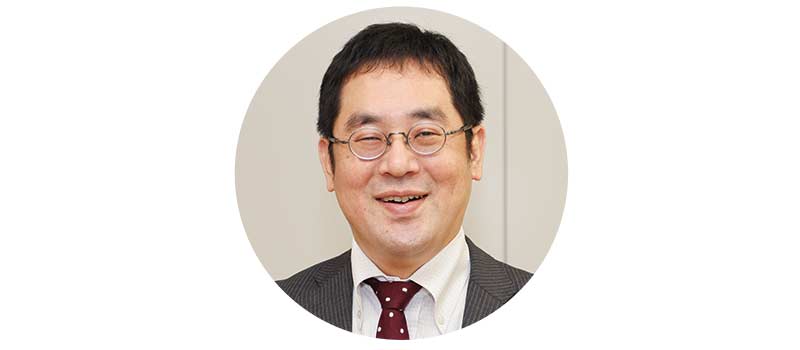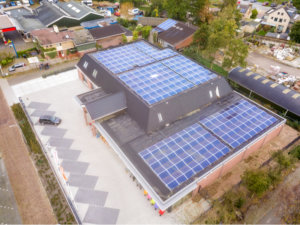FIT抜本見直しの背景-競争電源と地域活用電源とは?
2020/10/15

再生可能エネルギーの主力電源化と国民負担低減を旗印に、FIT制度(再生可能エネルギーの固定価格買取制度)の抜本的見直しが進められている。その背景には、どんな理念があり、見直し内容はどこまで固まっているのか。資源エネルギー庁 新エネルギー課長の清水淳太郎氏に聞いた。
電源特性に応じた
細やかな制度設計
FIT以前は10%程度だった再生可能エネルギーの導入が、いま足元の速報値で16.9%というところまで来ています。FITなしには成し得なかったといえるでしょう。ただ、そこには電源ごとに大きな違いがあります。
太陽光の導入は急速に進み、コストも下がってきました。一方で、その中で、系統への負荷の増大や地域との共生といった課題が生じてきています。また、他の電源については、なかなか導入量が増えてきていません。
次の10年を見据えたとき、どういう制度であるべきか。再エネ比率22~24%というエネルギーミックスを実現し、再エネを主力電源化していくためにも、電源ごとの特性に応じた制度に作りかえていかなければなりません。それが、今まさに行われていることなのです。
競争電源はFIPに移行
市場取引が基本に
再エネ電源を、まず大きく2つに分けて、検討を進めています。「競争電源」と「地域活用電源」です。競争電源とは、例えば、大規模太陽光発電のように、今後いっそうコストダウンを図り、電力市場のなかで競争力のある電源にしていくべきものです。地域活用電源とは、コストは現時点ではなかなか下がってきていないものの、地産地消されるとか、災害時のレジリエンスに役立つなど、発電だけではない価値を期待できる電源です。
競争電源については、FIT制度からFIP制度に移行し、電力市場への統合を図っていくことが柱となります。固定価格での買取ではないが、市場で取引してもらい、プレミアム(上乗せ)を交付することで、投資インセンティブを確保する制度です。この制度の下で、発電事業者が市場で自由に売れるようになります。新たな社会的責任を伴うことにもなりますが、そこには、これまでにないビジネスチャンスも広がっています。市場価格が安い時に貯めておき、高い時に売ったり、小さい電源をアグリゲートして束ねて売ったりなど、様々なビジネスが出てくるのではと期待しています。
地域活用電源は条件付FIT
低圧太陽光に自家消費義務
地域活用電源については、それぞれの電源ごとに地域活用の在り方を評価し、一定の条件のもとに、当面はFIT制度を適用していく方針です。昨今の災害の際、域内が停電していても、太陽光発電やバイオマス発電といった再エネ電源が自立運転し、活用されるといった事例が増えてきています。
また、域内で集材した資源を活用して発電し、域内で消費するといった地産地消のモデルも増え始めています。単に投資物件として購入し、地域で顔が見えない事業ではなく、地域に根付き責任をもって事業を行っていく案件について支援をしてきたいと思っています。
主力電源化に向けて
再エネビジネスに期待
いずれの電源においても、単純な発電を超えた社会的な価値を、どう生んでいくかが大事になってきます。新しい制度のもとで新しいビジネスを興してもらい、それを通じて、より国民負担を減らしながら、再エネの大量導入を果たしていく。主力電源化に向けてこういう流れを作り出すことが、あるべき再エネ社会の実現に向けて重要だと思っています。
そういった意味では、こうした制度改革の動きなども、うまく捉えていただき、先駆けていろいろなモデルを構築し、より収益力があり地域と共生した再エネビジネスを展開していただきたいと思います。それが再エネのさらなるコスト低減と、導入拡大につながっていくものと確信しています。
電源特性に応じたFIT制度の見直し
競争力のある電源への成長が見込まれる電源
(競争電源)
例:大規模太陽光、陸上・洋上風力
【意義と課題】
● 導入量が増加、コスト競争力の上昇が期待。
● 一方で、「固定価格買取」の結果、電力市場関係なく発電するため、非効率。
【方向性】
● 投資インセンティブは維持しつつ、電力市場と連動した仕組みに変更。
地域で活用される電源
(地域活用電源)
例:住宅用・小規模太陽光、小規模地熱、小規模水力、バイオマス
【意義と課題】
● 自家消費や地域内循環により、地域のレジリエンス強化に資する。
● 他方、コスト低下には課題。
【方向性】
● 地域への貢献/供給を要件に、FIT制度の支援を継続。
PROFILE
経済産業省 資源エネルギー庁 新エネルギー課長
清水 淳太郎氏

Background to fundamental review of feed-in tariff (FIT) system What are competitive power sources and regional power sources?
In its efforts to turn renewable energy into a main power source and reduce the national burden, the Japanese government is moving forward with the fundamental revision of its feed-in tariff (FIT) system. What is the philosophy behind the revision, and how much progress has been made? We recently posed these questions to Mr. Juntaro Shimizu, Director of the New and Renewable Energy Division at the Agency for Natural Resources and Energy.
Text: Kiminori Hiromachi
Director, New and Renewable Energy Division
Agency for Natural Resources and EnergyMinistry of Economy, Trade and Industry
Juntaro Shimizu
Detailed system design in line with power supply characteristics
According to the latest figures, renewable energy, which made up roughly 10% of the energy mix before the FIT policy, has now reached 16.9%. It is safe to say that this increase could not have been achieved without the FIT system. There are, however significant differences depending on the type of power supply. Photovoltaic renewable energy has progressed rapidly, and costs have decreased. On the other hand, issues regarding increased load on the grid and symbiosis with local communities have emerged. In addition, renewables coming from other power sources have not increased. So what kind of energy system should we anticipate in the next 10 years? In order to realize a mix that generates 22-24% of power from renewable energy sources and turns renewable energy into a chief source, we need to adjust the system according to the characteristics of each power source. That is exactly what is happening now.
Competitive power sources shifting to feed-in premiums (FIP) scheme Making market transactions the norm
Headway is being made regarding inquiries into two major types of renewable energy sources—competitive power sources and local power sources. In the future, costs for competitive power sources such as large scale photovoltaic power generators must be reduced so they can compete in the energy market. While cutting costs associated with local power sources has proved to be challenging, these sources are expected to created added value outside power generation, including in the form of local production and consumption and resilience in the event of a disaster. As for competitive power sources, one notable pillar is the shift from the FIT system to a feed-in premiums (FIP) scheme (see page 42) and the integration into the electric power market. While energy is not sold by producers at a fixed price, an added premium secures investment incentives. Under this system, power producers are able to sell freely in the market. While this may give birth to new societal responsibilities, there are unprecedented business opportunities, including storage when the market price is low, sales when prices are high, and the aggregation and sale of small power sources.
FIT system applied to local power sources Locally responsible energy sources
The current policy involves evaluating local power based on each type of power source and applyig the FIT system to these sources under certain conditions. There is an increasing number of cases during recent disasters where renewable energy sources such as solar and biomass operate independently even during regional power outages. In addition, there are more local production and consumption models that utilize local resources to generate and consume electricity in the region. We would like to support projects that are conducted under local responsibility rather than simply purchased as opaque investment properties.
Towards a main source of energy Expectations for renewables business
In the case of any power source, the creation of societal value beyond simple power generation is very important. Under the new system, we can create new businesses, and as a result, ensure the introduction of vast amounts of renewable energy sources while reducing the burden on the public. It is critical to creating this type of trend as we work towards transforming renewables into the main power source and creating a renewable energy society. In line with these ideas, I hope we can continue to advance with our system reforms, construct pioneering models, and develop more profitable, synergistic renewable energy businesses. I am confident that this will result in further cost reduction and wide expansion of clean energy.
取材・文/廣町公則
RE JOURNAL vol.2(2019-20年冬号)より転載












